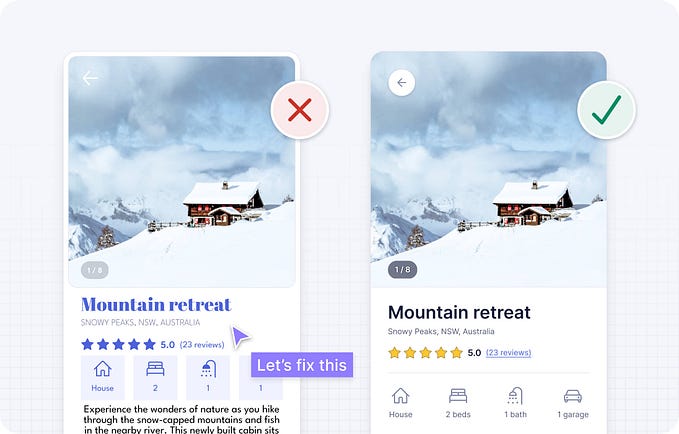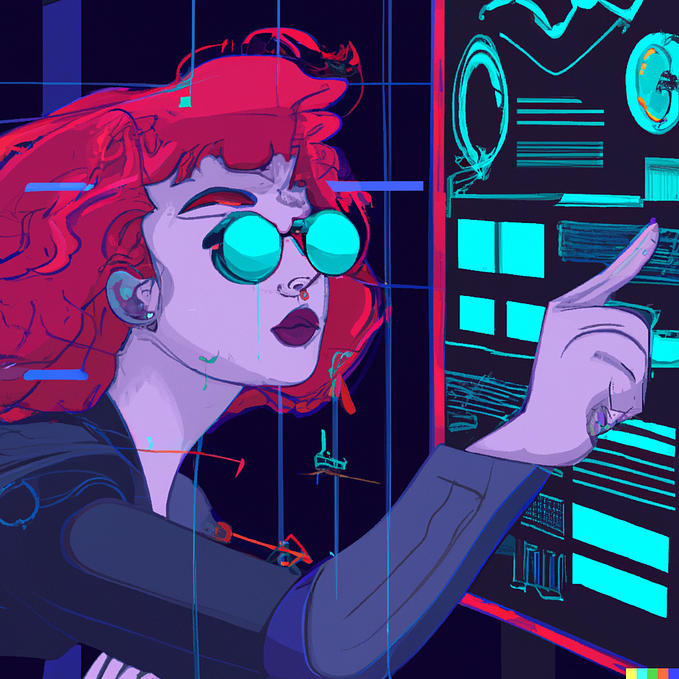Scaling Design as the Company Grows
The nine pillars of creating a design culture that grows and evolves with a company.
There’s an idea that floats incessantly around the Internet, which is best summed up as “design doesn’t scale”, and it’s been mostly debunked over the last few years. I say mostly because no system is perfect and some yahoo will always use that to devalue design. It’s our cross to bear.
When it comes to scaling design though, the process of alignment can be dauntingly complex for someone who isn’t a veteran of the game. What follows is a quick non-exhaustive reference to the moving parts of that challenge.
There are 9 areas of focus to account for when scaling design to multiple teams, or enterprises.
Core Principles
Ethical Touchstones
Team Structure
Design System
Process & Methodology
Generative Research
Behavioral Analytics
Measurable ROI
Evangelism & Outreach

Core Principles
By articulating our core principles, we ensure that everyone who practices design, or design thinking, is grounded in a common set of agreements. It’s easiest to think of this as a creative mission statement. Core principles aren’t about tactics or execution, they’re about a team’s dominant aspiration.
Considering a diverse set of examples can be elucidating, so here’s a quick list:
Salesforce: Lightning Design System principles
- Clarity
- Efficiency
- Consistency
- Beauty
Google: Material Design principles
- Material is the metaphor
- Bold, graphic, intentional
- Motion provides meaning
IBM Design principles
- A focus on user outcomes
- Restless Innovation
- Diverse empowered teams
Airbnb Design principles
- Unified
- Universal
- Iconic
- Conversational
VMware Clarity principles
- Product-based
- Rapid development
- Evolving
- Reliable
Intuit: Harmony Design principles
- Drive cohesive customer experiences across devices and product ecosystem.
- Steward design innovation and excellence throughout the Intuit organization and beyond
- Support internal and external Intuit teams through a centralized design system and re-usable components
Ethical Touchstones
Without a code of ethics, creative and UX design quickly devolve into a seedy underworld of psychological hacks and dark patterns. Dark patterns are interactive techniques designed to trick or deceive a user into taking action. Because usability testing puts such a ruthless focus on action, a/b testing will often conclude that these patterns are a holy grail of effectiveness. As a result, almost every company has a few dark patterns in place. Developing our ethical principles is just as important as sustaining our core principles in a field where we try to view design as a force for good in the world.
Team Structure
Nathan Curtis (founder, eightshapes) provided an excellent overview of team models for scaling design systems in 2015. His conclusions are broadly applicable to design culture in general. Curtis identified three primary design team models:
The solitary model
This model is common to startups who have one primary designer and perhaps a handful of contractors. All design decisions route through a single unicorn-like subject matter expert. The solitary model is cost-effective up front but it doesn’t scale well. Solitary experts frequently suffer from tunnel vision or myopia in the absence of a diverse and well-rounded team. As in all things scalable, delegation is a necessary side-effect of growth.
The Centralized Model
This is probably the most common design team setup. A centralized team makes design decisions, which are then applied across the entire company. It works very well for agency teams and medium to large businesses. At the enterprise level, however, the scale of operations becomes problematic without a cult-like personality leading the charge.
Most centralized design teams eventually find themselves unable to maintain effective control over a sprawling brand. Friction increases between the design team and other powerful stakeholders, who may begin to exhibit a disdain for the out of touch authority. This often results in both strategic and executional inconsistency, expressed as fragmented design decisions and quality control issues between sub-brands.
The Federated Model
This model de-centralizes the practice of design while consolidating its direction by way of a style guide or design system. Federated design teams are collaborative by nature and constantly evolving based on the needs of a project or challenge. The core design group maintains a design system while individual teams are free to interpret, extend, and contribute back to it. Google’s “committee by design” is the federated system with the most visibility in the design world, thanks to Material Design. It differs substantially from Apple’s HIG model, which is based on a centralized system run by Johnny Ive.
Design System
When scaling design, diverse creative interpretations can very quickly move from being an asset to a liability. Stakeholders need to know that when they work with a creative studio the assigned team will use a consistent and repeatable process that results in a predictable quality of work. Teams also need to minimize their time-to market as a matter of competitive advantage, which is an area that has often bottlenecked with creative and UX . Design systems are a continuously evolving answer to both areas of concern.
A design system is a set of reusable modular components bound together by a style guide and comprehensive documentation. A good design system is restrictive by nature but flexible in application. Teams that use design systems have more time to focus on content architecture and the efficacy of the user journey because they aren’t continuously designing interactions and visual approaches from scratch. Design systems also contain pre-coded objects, so layouts can be generated much more quickly by developers.
Here’s a short list of some famous design systems:
- Google Material Design
- GE Predix
- Salesforce Lightning
- VMWare Clarity
- Apple Human Interface Guidelines (HIG)
Developing a design system is a specialized undertaking. Simply looking at Material Design and saying “we want one” is too big a challenge out of the gate. A design system is realized in stages, over time. Hiring a designer with prior experience building one is a good first step.
Process & Methodology
Adopting an effective process & methodology can take years, even for an experienced leadership team. The larger the company, the more difficult the task becomes; which is why growing companies are well advised to begin early and revise often. Creative and strategic process are as much about negotiation with other business units as internal dynamics. Identifying a working model means balancing the requirements of a company’s development methodology with the reality of a team’s creative process.
One of the best examples of this can be understood through the history of Lean UX (Jeff Gothelf, 2013). User experience design is, by nature, a very waterfall practice. Its practitioners are most comfortable when a nearly omniscient level of user research has been distilled into a concise strategy before a creative execution is attempted. Agile, on the other hand, thrives within the cone of uncertainty and executes small, rapid changes to an existing product. The two approaches were fundamentally incompatible and after years of friction, Lean UX was the game-changing result. To a classic UX Designer, however, Lean is still a very uncomfortable process to learn.

As a company develops its own methodology, discomfort is an expected side-effect. Learning to manage that discomfort among designers, developers, and stakeholders without causing a corporate civil war is nearly as critical as articulating the process itself.
Generative Research
In design, exploratory research teaches us about our potential audience and evaluative research tells us how they feel about existing solutions. Generative research, on the other hand, tells us what might be possible. It’s the formal study of nearly-impossible things; the Mad Hatter would have loved it. A healthy design culture spends a lot of time in the yellow circle (below).

This form of research is all about discovering the right questions to ask and gaining unexpected perspectives as a result. By involving our users directly in the human-centered design process we remove many of our preconceived biases from the result. That’s a good thing.
The work focuses on problem discovery and participatory design. The Google Ventures design sprint is a direct descendent of this practice (it requires good generative research and is a participatory ideation — though it’s not technically a generative activity). Generative research techniques enable teams to short-circuit the trap of rigid institutionalized assumptions that plagues most companies at scale.
Many familiar types of research fall under the generative umbrella:
Behavioral Analytics
The fundamental difference between fine art and design is intent. Design conveys a specific message and requires a consistent interpretation if it is to be considered successful. Intent is measured through the observation of behavioral change when comparing two or more versions of a creative execution. It follows that analytics to measure behavioral change within a system are a critical component of any scalable design system. We are unable to optimize what we cannot see, and without behavioral analytics we are blind.
Unless you have an in-house data science team, measuring advanced behavioral analytics requires a suite like MixPanel or Amplitude. Less specialized suites like Google Analytics will get a team only part of the way there.
Measurable ROI
At a certain point, a company will need a way to quantify investment levels among one of more design teams based on the actual business value they provide.
A lazy set of metrics might take a ruthless approach to conversion (did the design sell more product?), which leads to the use of unethical dark patterns as a matter of survival.
Well considered metrics will account for things like speed of iteration, responsiveness to change, user satisfaction, stakeholder satisfaction, positive buzz, and adherence to the core principles and ethical touchstones established in harmony with the larger brand.
Evangelism & Outreach
No matter how well a company’s design culture has been articulated, communicating it to a diverse set of teams will make or break the effort. Every division of an enterprise has its own goals to achieve and if they don’t understand how good design is helping them, it’ll feel like extra work that doesn’t have a relevant outcome.
As design scales, so must the education and outreach program. The board of directors isn’t the only team that needs to understand the ROI of good design. Communicating our value to a every corner of the company is the life blood of a healthy and innovative culture.
—
At the time of this publication, I am a Principal UX Designer at Dell EMC’s Digital Marketing Studio in San Francisco. I learned HTML in 1997 and built my first commercial web experience in 1999. Professional designers and entrepreneurs can connect with me on LinkedIn or Twitter.
Leave a note when connecting on LinkedIn, especially if you have a weird title.









